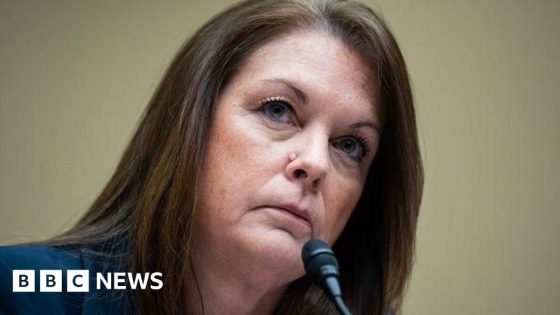WASHINGTON (AP) — Arizona, Nevada and Mexico will continue to live with less water next year from the Colorado River after the U.S. government on Thursday announced water cuts that preserve the status quo. Long-term challenges remain for the 40 million people reliant on the imperiled river.
The 1,450-mile (2,334-kilometer) river is a lifeline for the U.S. West and supplies water to cities and farms in northern Mexico, too. It supports seven Western states, more than two dozen Native American tribes and irrigates millions of acres of farmland in the American West. It also produces hydropower used across the region.
Years of overuse combined with rising temperatures and drought have meant less water flows in the Colorado today than in decades past.
The Interior Department announces water availability for the coming year months in advance so that cities, farmers and others can plan. Officials do so based on water levels at Lake Mead, one of the river’s two main reservoirs that act as barometers of its health.
Based on those levels, Arizona will again lose 18% of its total Colorado River allocation, while Mexico’s goes down 5%. The reduction for Nevada — which receives far less water than Arizona, California or Mexico — will stay at 7%.
The cuts announced Thursday are in the same “Tier 1” category that were in effect this year and in 2022, when the first federal cutbacks on the Colorado River took effect and magnified the crisis on the river. Even deeper cuts followed in 2023. Farmers in Arizona were hit hardest by those cuts.
Heavier rains and other water-saving efforts by Arizona, California and Nevada somewhat improved the short-term outlook for Lake Mead and Lake Powell, which is upstream of Mead on the Utah-Arizona border.
Officials on Thursday said the two reservoirs were at 37% capacity.
They lauded the ongoing efforts by Arizona, California and Nevada to save more water, which are in effect until 2026. The federal government is paying water users in those states for much of that conservation. Meanwhile, states, tribes and others are negotiating how they will share water from the river after 2026, when many current guidelines governing the river expire.
Tom Buschatzke, director of Arizona’s Department of Water Resources and the state’s lead negotiator in those talks, said Thursday that Arizonans had “committed to incredible conservation … to protect the Colorado River system.”
“Future conditions,” he added, “are likely to continue to force hard decisions.”
___
Associated Press reporter Amy Taxin contributed from Santa Ana, Calif.
___
The Associated Press receives support from the Walton Family Foundation for coverage of water and environmental policy. The AP is solely responsible for all content. For all of AP’s environmental coverage, visit
Source Agencies


